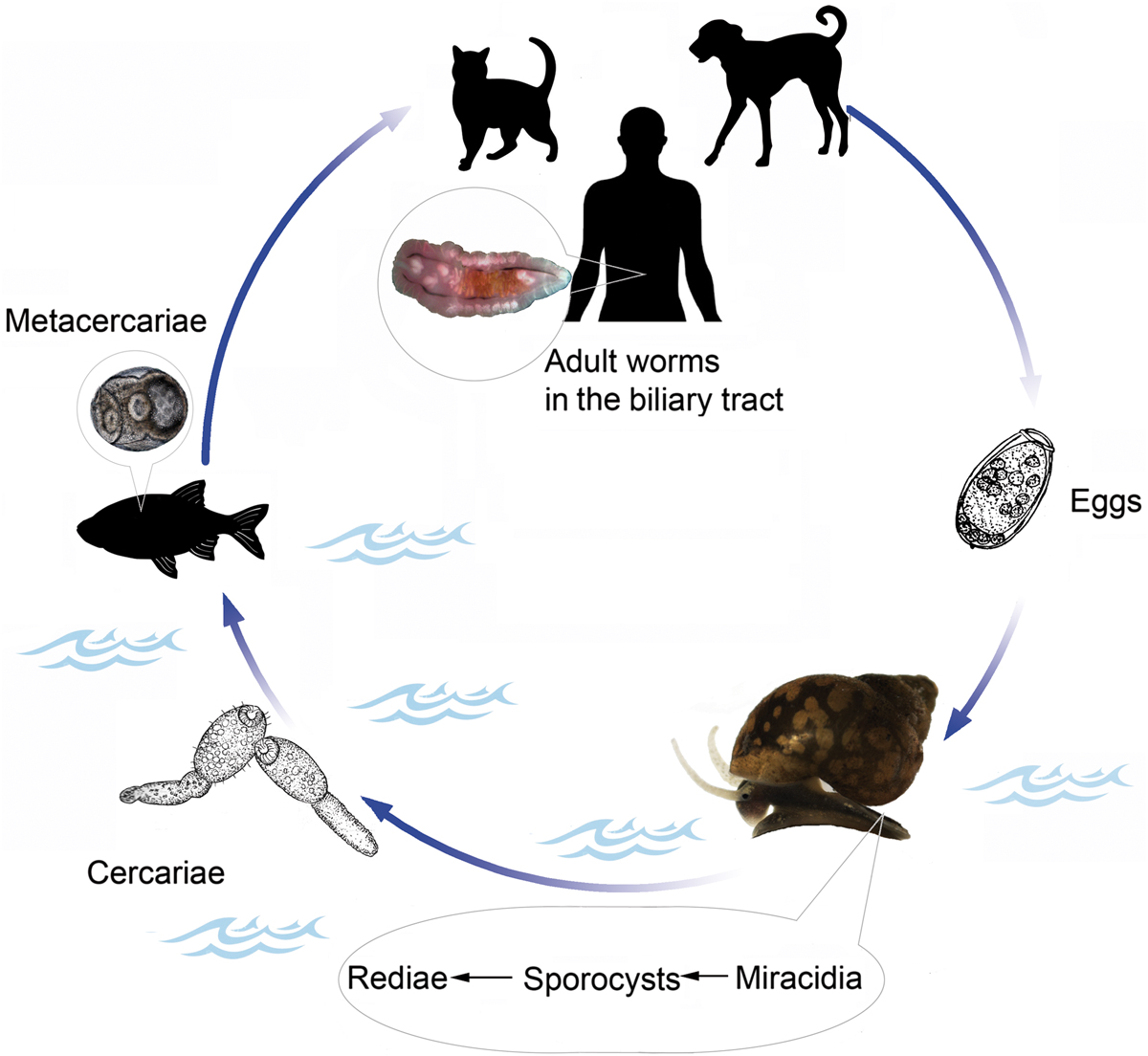Open Access
Review
Figure 1

Download original image
The life cycle of O. felineus [15]. The eggs are shed in the biliary tree, enter the intestine, and are passed with feces. They need to be ingested by freshwater gastropod Bithynia snails, the first intermediate host, to develop into sporocysts, rediae, and free-swimming cercariae: the stage infective for the second intermediate host, cyprinid fish. Humans and other fish-eating mammals and birds may serve as a definitive host after ingesting infected fish. Upon entering the host body, metacercariae infect the biliary tract of mammals, where they mature into adult worms. Pictures of cercariae and eggs are adapted from [15]; Bithynia snail, metacercaria, and adult O. felineus are original pictures.

